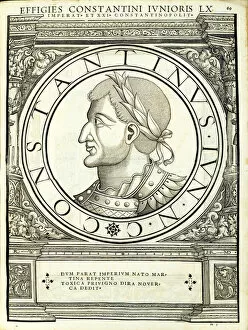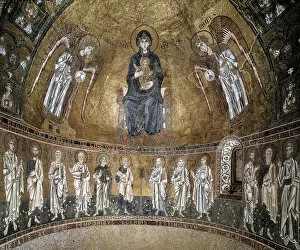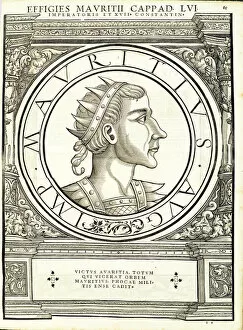Byzantine Empire Collection (page 8)
The Byzantine Empire, a vast and influential civilization that spanned over a millennium, left an indelible mark on history
All Professionally Made to Order for Quick Shipping
The Byzantine Empire, a vast and influential civilization that spanned over a millennium, left an indelible mark on history. Its borders stretched across Europe, Asia, and Africa, as depicted in the Map of the Byzantine Empire in the 9th Century. Within this empire thrived various cultural and intellectual achievements. The Hippocratic Oath, symbolizing ethical conduct for medical practitioners, was written in the form of a cross during this time period. A Byzantine manuscript from the 12th century beautifully preserves this important code. As conflicts raged across Europe during the Third Crusade in 1190, a map shows how the Byzantines navigated their way through turbulent times. Saints Sergius and Bacchus were revered figures within this empire; their iconic representation showcases their significance to Byzantine society. Artistic masterpieces also emerged during this era. The Portrait of Saint Matthew found within the Book of Lindisfarne Gospels is an exquisite example of illuminated manuscripts created around 700 AD. Military prowess played a crucial role for the Byzantines as well. Greek fire was a formidable weapon used by them against enemies; its destructive power is vividly captured in miniatures like those found in Madrid Skylitzes. Leadership shaped the course of history for any empire - Justinian I stands out as one such figure who reigned supreme over Byzantium from 527 to 565 AD. His legacy continues to be celebrated today. Dynasties rose and fell throughout centuries within these lands; one such dynasty being Buwayids circa 932 AD which had significant influence on political affairs at that time. Religion held immense importance for both rulers and citizens alike - ivory carvings depicting Christ alongside Holy Roman Emperor Otto II and Empress Theophano exemplify religious devotion prevalent during this era. Lastly, icons served as visual representations of faith - an icon portraying Abraham serving three angels captures the essence of Byzantine religious artistry in the late 14th century.
















































